Libanon |
|
|
|
| Übersicht – Contents: | |
Libanon |
|
|
|
| Übersicht – Contents: | |
Flaggen – Flags: |
|
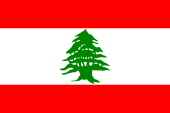 |
National-, Handels- und Marineflagge – national, merchant and naval flag, Seitenverhältnis – ratio = 2:3, Quelle/Source, nach/by: Flags of all Nations   |
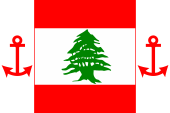 |
Gösch – jack, Seitenverhältnis – ratio = 2:3, Quelle/Source, nach/by: Flags of all Nations |
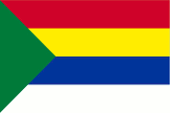 |
Flagge der Drusen – flag of Druze, |
historische Flaggen – historical Flags: |
|
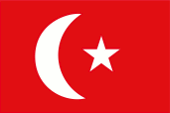 |
1516–1920, (offiziell – officially) |
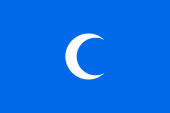 |
ca.1697–1842, Flagge des Schihab-Emirats – flag of the Chehab Emirate, Quelle/Source, nach/by: Flags of the World |
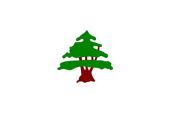 |
1861–1920, Flagge des Gouverneurs – flag of the Governor, Quelle/Source, nach/by: Nationalflaggen der Welt, Die Welt der Flaggen |
 |
Juli bis/to August 1920, Flagge der Französischen Mandatsverwaltung – flag of the French Mandate Administration, Quelle/Source, nach/by: Flags of the World |
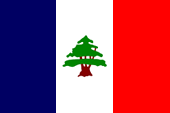 |
1920–1943, Nationalflagge – national flag, Quelle/Source, nach/by: Wikipedia (DE), Flaggenbuch 1939 |
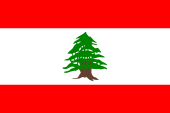 |
1943–1995, |
Bedeutung/Ursprung der Flagge – Meaning/Origin of the Flag: |
|
| Die heutige Flagge wurde am 07.12.1943 eingeführt und 1995 ein wenig abgeändert. Sie zeigt seit dem drei waagerechte Streifen in Rot, Weiß und Rot mit einer grünen Zeder (bis 1995 war sie naturfarben) in dem doppelt breiten, weißen, mittleren Streifen. | The today's flag was introduced on the 7th of December in 1943 and in 1995 changed a little bit. It shows since then three horizontal stripes in red, white and red with a green cedar (until 1995 it was ecru-coloured) in the double broad, white, middle-stripe. |
| Die Zeder symbolisiert Heiligkeit, Ewigkeit und Frieden. Die Farbe Rot steht für Selbstaufopferung und Edelmut und Weiß steht für Frieden. | The cedar
symbolizes sanctity, eternity and peace. The colour red stands for self-sacrifice and magnanimity and white stands for peace. |
| Die Zeder ist zwar ein typischer Baum des Mittelmeergebietes, aber die Zedern des Libanon gelten als heilig und waren schon zu Zeiten von König Salomo bekannt. Das Bild einer Zeder wurde schon in der weißen Flagge des christlichen Gebietsgouverneurs ab 1861 unter den Türken benutzt. | The cedar
is indeed a typical tree of the Mediterranean region, but the cedars of
Lebanon apply as holy and have been known already in the times of King
Salomo. The image of a cedar was already in use since 1862 in the white flag of the Christian Territorial Governor under the Turks. |
| In der Zeit, in der das Land zum Osmanischen Reich gehörte, de jure zwischen 1516 und 1920, wurde offiziell dessen Symbolik verwendet. Die christlichen Maroniten hatten das Recht einer gewissen Selbstverwaltung, die zwischen 1697 und 1842 in den Händen der Schihab-Dynastie lag, die einen weißen Halbmond auf blauem Grund zeigte, auch wenn die Angehörigen der Familie Schihab inzwischen zu Christen geworden waren. | During the period when the country belonged to the Ottoman Empire, de jure between 1516 and 1920, its symbolism was officially used. The Christian Maronites had the right of a kind of self-government, which was in the hands of the Chehab Dynasty between 1697 and 1842, which showed a white crescent on a blue background on the flag, even though the members of the Chehab family meanwhile had become Christians. |
| Als französisches Mandatsgebiet des Völkerbundes verwendete Libanon zwischen 1920 und 1943 die französische Trikolore mit der Zeder in der Mitte des weißen Feldes. | As French mandate territory of the League of Nations used Lebanon between 1920 and 1943 the French Tricolor with the cedar in the middle of the white field. |
| Quelle/Source: Wikipedia (DE), Wappen und Flaggen aller Nationen, Nationalflaggen der Welt, Die Welt der Flaggen | |
Wappen – Coat of Arms: |
|
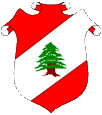 |
Wappen Libanons – coat of arms of Lebanon, Quelle/Source, nach/by: Die Welt der Flaggen |
Bedeutung/Ursprung des Wappens – Meaning/Origin of the Coat of Arms: |
|
| Offiziell hat Libanon kein Wappen. Im Bedarfsfall wird seit den 20-er Jahren des 19. Jahrhunderts ein der Flagge ähnliches Emblem verwendet. Dieses Emblem zeigt ein Wappenschild in Rot, darüber ein silberner Schrägbalken und in dessen Mitte eine naturfarbene Zeder. |
Officially Lebanon has none coat of arms. In the case of requirement is in
use since the twenties of the 19th century a to the flag similar emblem.
That emblem shows a blazon in red, over there a silvery diagonal bar and in
its middle an ecru cedar. |
| Quelle/Source: Flaggen und Wappen der Welt | |
Flugzeugkokarde – aircraft roundel: |
|
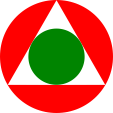 |
Flugzeugkokarde – aircraft roundel Quelle/Source, nach/by: Wikipedia (EN) |
Landkarten – Maps: |
Lage – Position: |
Landkarte des Landes – Map of the Country: |
Zahlen und Fakten – Numbers and Facts: |
|
|
|
|
|
|
|
|
|
|
|
|
|
|
|
|
|
|
|
|
|
|
Geschichte: |
|
1200–900 v.Chr. · Besiedelung durch Phönizier 63 v.Chr. · der heutige Libanon kommt an das Römische Reich ca. 70 n.Chr. · Ausbreitung des Christentums 395 · bei der Teilung des Römischen Reiches kommt der heutige Libanon an das Oströmische Reich (Byzanz) 643 · das Gebiet des heutigen Libanon wird vom Arabischen Kalifat erobert, teilweise Islamisierung 1020 · die Sekte der Drusen etabliert sich 1097 · christliche Kreuzfahrer erobern das Gebiet des heutigen Libanon und gründen im Norden die Grafschaft Tripolis, der Süden kommt an das Kreuzfahrer-Königreich Jerusalem 1291 · die Kreuzfahrer werden aus Beirut und Sidon vertrieben, Ende der christlichen Herrschaft 1516 · das Gebiet des heutigen Libanon wird vom Osmanischen Reich erobert 1799 · Frankreich unter Napoléon Bonaparte versucht vergeblich Libanon zu erobern, kann jedoch von Süden her nur bis Akkon (Akka) vordringen 1840 · Bürgerkrieg zwischen Drusen und libanesischen Christen (Maroniten), Frankreich erklärt die Schutzherrschaft über die Maroniten 1860 · militärische Intervention Frankreichs, das Osmanische Reich muss ab 1862 einen christlichen Gouverneur mit einer gewissen Autonomie in Tripolis akzeptieren 1914–1918 · Erster Weltkrieg: 1916 Frankreich erhebt Anspruch auf Libanon, 1917-1918 von Süden her dringen britische Truppen in den Libanon ein, Oktober 1918 Landung französischer Truppen in Beirut 1920 · Syrien, Palästina, Transjordanien und Irak werden als künftige Mandatsgebiete des Völkerbundes aus dem Territorium des Osmanischen Reiches herausgelöst und teils Großbritannien teils Frankreich unterstellt → ganz Syrien (und damit Libanon) wird von Frankreich besetzt 1923 · Syrien (und damit Libanon) wird offiziell zum französischen Mandatsgebiets des Völkerbundes erklärt 1926 · Frankreich löst Libanon aus Syrien heraus, es erhält eine eigene Verwaltung 1939–1945 Zweiter Weltkrieg: Libanon steht zunächst an der Seite der französischen Regierung in Vichy, 1941 Einmarsch britischer und "freier" französischer Truppen 26.11.1941 · Libanon wird als formal als unabhängig erklärt 1943 · Libanon erhält eine Verfassung, den „Nationalpakt“ 1944 · das Mandat des Völkerbundes wird aufgehoben 1946 · Abzug der britischen und französischen Truppen, volle Souveränität 1958 · US-amerikanische militärische Intervention 1967 · starker Zustrom von aus Palästina flüchtenden Arabern (Palästinenser) 1975 · Beginn des Bürgerkriegs 1976 · Einmarsch syrischer Truppen, Besetzung großer Teile des Landes 1978 · Israel marschiert in den Süden des Libanon ein 1982 · Israel marschiert nach Libanon ein und dringt bis Beirut vor 1985 · Abzug der israelischen Truppen aus Libanon, mit Ausnahme einer schmalen Sicherheitszone im Süden des Landes 1987 · syrische Truppen marschieren in Beirut ein 1990 · Verfassungsreform 1991 · Entwaffnung der Bürgerkriegsparteien, Ende des Bürgerkriegs 1993 · israelische militärische Intervention 1996 · israelische militärische Intervention 2000 · Rückzug Israels aus der südlibanesischen Sicherzeitszone 2005 · Rückzug der syrischen Truppen aus Libanon August 2006 · Israelische Truppen marschieren im Libanon ein, in 34 Tagen Krieg gelingt es nicht die Hisbolla-Miliz zu schwächen, der Süden Libanon wird druch die Aktionen der Israelis weitgehend zerstört |
History: |
|
1200–900 B.C. · settlement by Phoenicians 63 B.C. · the today's Lebanon comes to the Roman Empire ca. 70 A.D. · expansion of the Christianity 395 · at the partition of the Roman Empire the today's Lebanon comes to the East Roman Empire (Byzantium) 643 · the region of the today's Lebanon becomes conquered by the Arabic Califate, partial islamization 1020 · establishment the sect of the Druses 1097 · christian crusaders conquer the region of the today's Lebanon and establish in the north the County of Tripolis, the south comes to the crusader's Kingdom of Yerusalem 1291 · the crusaders get banished out of Beirut and Sidon, end of the christian reign 1516 · the region of the today's Lebanon becomes conquered by the Ottoman Empire 1799 · France under Napoléon Bonaparte attempts fruitless to conquer Lebanon, advance from south only up to Akkon (Akka) 1840 · civil war between Druses and Lebanese Christians (Maronites), France declares the patronage over the Maronites 1860 · military intervention of France, the Ottoman Empire has to accept from 1862 a christian governor with a indecisive autonomy in Tripolis 1914–1918 · First World War: 1916 France claims Lebanon, 1917–1918 from the south invade British troops into the Lebanon, October 1918 landing of French troops in Beirut 1920 · Syria , Palestina, Transjordan and Iraq become separated out of the territory of the Ottoman Empire as prospective mandate's territories of the League of Nations and partly United Kingdom and partly France subordinated → whole Syria (and in this way Lebanon) becomes occupied by France 1923 · Syria (and in this way Lebanon) becomes declared officially a French mandate's territory of the League of Nations 1926 · France separates Lebanon from Syria, it gets an own government 1939–1945 Second World War: Lebanon stands initially on the side of the French government in Vichy, 1941 invasion of British and "free" French troops 26th of November 1941 · Lebanon gets formally declared as independent 1943 · Lebanon gets a constitution, the „national pact“ 1944 · the mandate of the League of Nations becomes dissolved 1946 · withdrawal of the British and French troops, full sovereignty 1958 · US-American military intervention 1967 · strong influx of from Palestina fleeing Arabs (Palestinians) 1975 · onset of the civil war 1976 · invasion of Syrian troops, occupation of large parts of the country 1978 · Israel invades into the south of the Lebanon 1982 · Israel invades into the Lebanon and advances to Beirut 1985 · withdrawal of the Israeli troops out of Lebanon, except a slender security zone in the south of the country 1987 · Syrian troops march onto Beirut 1990 · constitutional reform 1991 · disarmament of the civil war parties, end of the civil war 1993 · Israeli military intervention 1996 · Israeli military intervention 2000 · withdrawal of Israel out of the south Lebanese security zone 2005 · withdrawal of the Syrian troops from Lebanon August 2006 · Israeli troops invade in Lebanon, in 34 days of war there was no success to weaken the Hisbolla Militia, the south of Lebanon becomes appreciably destroyed by the campaigns of the Israeli |
| Quelle/Source: Atlas zur Geschichte, Wikipedia (D), Discovery '97 |
Ursprung des Landesnamens – Origin of the Country's Name: |
|
| Die
Bezeichnung "Libanon" geht auf das arabische Wort für die Farbe Weiß
("loubnan") zurück. Das sich durch das ganze Land ziehende Gebirge ist das "Jabal loubnan", das "Weiße Gebirge", das "Libanongebirge". |
The
designation "Lebanon" goes back to the Arabic word for the colour white
("loubnan"). The through the whole country reaching mountains are the "Jabal loubnan", the "White Mountains", the "Lebanon Mountains". |
| Quelle/Source: Handbuch der geographischen Namen | |